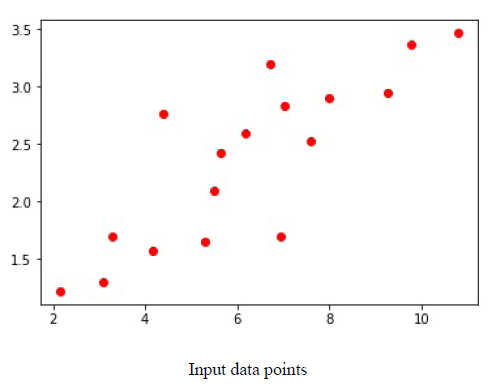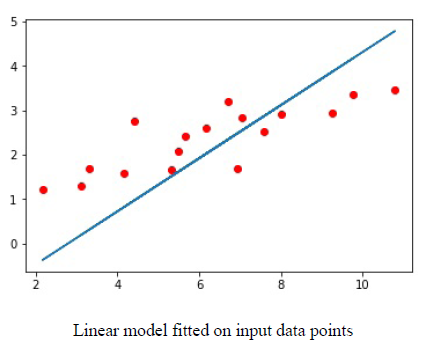前言
PyTorch和Tensorflow是目前最为火热的两大深度学习框架,Tensorflow主要用户群在于工业界,而PyTorch主要用户分布在学术界。目前视觉三大顶会的论文大多都是基于PyTorch,如何快速入门PyTorch成了当务之急。
正文
本着循序渐进的原则,我会依次从易到难的内容进行介绍,并采用定期更新的方式来补充该文。
一、安装PyTorch
参考链接:https://blog.csdn.net/miao0967020148/article/details/80394270
安装PyTorch前需要先安装Anaconda,然后使用如下命令
conda install pytorch torchvision cuda80 -c soumith { for cuda8.0 }
conda install pytorch torchvision -c soumith { for cuda7.5 }
pip3 install -i https://pypi.tuna.tsinghua.edu.cn/simple torch==1.3.1 (sudo apt install python3-pip)
pip3 install -i https://pypi.tuna.tsinghua.edu.cn/simple torchvision==0.4.2(同时会装上Torch1.3.1)
二、搭建第一个神经网络
一个简单的神经网络包含这些内容(数据准备,可调节参数,网络模型,损失函数,优化器)
1)数据准备
x,y=get_data()
2) 可调节参数
w,b=get_weight()
3) 网络模型
y_pred = simple_network(x) {y = wx+b }
4)损失函数
loss = loss_fn(y,y_pred)
5)优化器
optimize(learning_rate)
完整的神经网络如下:
x,y = get_data() # x - represents training data,y - represents target variables w,b = get_weights() # w,b - Learnable parameters for i in range(500): y_pred = simple_network(x) # function which computes wx + b loss = loss_fn(y,y_pred) # calculates sum of the squared differences of y and y_pred if i % 50 == 0: print(loss) optimize(learning_rate) # Adjust w,b to minimize the loss
三、数据准备
在PyTorch中,有两种类型的数据:1、张量;2.变量。其中Tensors类似于Numpy,就象Python中的Arrays,可以动态地修改大小。比如:一张正常的图像,可以用三维张量来表达,我们可以动态地放大到5维的张量。接下来逐一介绍各个维度的张量:
3.1张量
1)标量Scalar(0维张量)
x = torch.rand(10)
x.size()
Output - torch.Size([10])2)向量Vector(1维张量)
temp = torch.FloatTensor([23,24,24.5,26,27.2,23.0])
temp.size()
Output - torch.Size([6])3)矩阵Matrix(2维张量)
from sklearn.datasets import load_boston
boston=load_boston()
boston_tensor = torch.from_numpy(boston.data) boston_tensor.size() Output: torch.Size([506, 13]) boston_tensor[:2] Output: Columns 0 to 7 0.0063 18.0000 2.3100 0.0000 0.5380 6.5750 65.2000 4.0900 0.0273 0.0000 7.0700 0.0000 0.4690 6.4210 78.9000 4.9671 Columns 8 to 12 1.0000 296.0000 15.3000 396.9000 4.9800 2.0000 242.0000 17.8000 396.9000 9.1400 [torch.DoubleTensor of size 2x13]
4)3维张量Tensor
一张图片在内存空间中就是3维的。
from PIL import Image import matplotlib.pyplot as plt # Read a panda image from disk using a library called PIL and convert it to numpy array panda = np.array(Image.open('panda.jpg').resize((224,224))) panda_tensor = torch.from_numpy(panda) panda_tensor.size() Output - torch.Size([224, 224, 3]) #Display panda plt.imshow(panda)
5)4维张量Tensor
一张图片为3维的Tensor,4维的张量就是多张图片的组合。使用GPU,我们可以一次性导入多张图片用来训练,导入的图片张数取决于GPU内存大小,一般情况下,批量导入的大小为16,32,64。
#Read cat images from disk cats = glob(data_path+'*.jpg') #Convert images into numpy arrays cat_imgs = np.array([np.array(Image.open(cat).resize((224,224))) for cat in cats[:64]]) cat_imgs = cat_imgs.reshape(-1,224,224,3) cat_tensors = torch.from_numpy(cat_imgs) cat_tensors.size() Output - torch.Size([64, 224, 224, 3])
6)5维张量Tensor
视频文件一般为5维的张量,在处理视频时,我们通常是把视频分解成一帧帧的图片,可以存储为[1,f,w,h,3]。而同时处理多个视频时,就是5维张量。
7) 切片张量Slicing Tensor
sales = torch.FloatTensor([1000.0,323.2,333.4,444.5,1000.0,323.2,333.4,444.5]) sales[:5] 1000.0000 323.2000 333.4000 444.5000 1000.0000 [torch.FloatTensor of size 5] sales[:-5] 1000.0000 323.2000 333.4000 [torch.FloatTensor of size 3]
显示单维图片:
plt.imshow(panda_tensor[:,:,0].numpy()) #0 represents the first channel of RGB
显示裁剪图片:
plt.imshow(panda_tensor[25:175,60:130,0].numpy())
生成一个全为1矩阵:
#torch.eye(shape) produces an diagonal matrix with 1 as it diagonal #elements. sales = torch.eye(3,3) sales[0,1]
8)GPU中张量Tensor
(1) TensorCPU操作
#Various ways you can perform tensor addition a = torch.rand(2,2) b = torch.rand(2,2) c = a + b d = torch.add(a,b) #For in-place addition a.add_(5) #Multiplication of different tensors a*b a.mul(b) #For in-place multiplication a.mul_(b)
(2) TensorGPU操作
a = torch.rand(10000,10000) b = torch.rand(10000,10000) a.matmul(b) Time taken: 3.23 s #Move the tensors to GPU a = a.cuda() b = b.cuda() a.matmul(b) Time taken: 11.2 μs
3.2 变量
深度学习算法经常是以计算图的形式出现,如下图:

一个梯度类描述如下:

梯度是关于y=wx+b中(w,b)的损失函数的改变率。
import torch
from torch.autograd import Variablex =torch.autograd.Variable(torch.ones(2,2),requires_grad=True)
y = x.mean()
y.backward() #用于计算梯度
x.grad Variable
containing: 0.2500 0.2500 0.2500 0.2500 [torch.FloatTensor of size 2x2]
x.grad_fn
Output - None
x.data 1 1 1 1 [torch.FloatTensor of size 2x2]
y.grad_fn <torch.autograd.function.MeanBackward at 0x7f6ee5cfc4f8>
3.3 为自己搭建的模型准备数据
def get_data(): train_X = np.asarray([3.3,4.4,5.5,6.71,6.93,4.168,9.779,6.182,7.59,2.167, 7.042,10.791,5.313,7.997,5.654,9.27,3.1]) train_Y = np.asarray([1.7,2.76,2.09,3.19,1.694,1.573,3.366,2.596,2.53,1.221, 2.827,3.465,1.65,2.904,2.42,2.94,1.3]) dtype = torch.FloatTensor X = Variable(torch.from_numpy(train_X).type(dtype),requires_grad=False).view(17,1) y = Variable(torch.from_numpy(train_Y).type(dtype),requires_grad=False) return X,y
3.4 搭建可学习参数
def get_weights(): w = Variable(torch.randn(1),requires_grad = True) b = Variable(torch.randn(1),requires_grad = True) return w,b
3.5 神经网络模型
一旦我们定义了输入与输出,接下来要做的就是搭建神经网络模型。比如:y=wx+b,w和b就是可学习参数。

下图是一个拟合好的模型:

图中蓝色线为拟合好的线。
模型完成
def simple_network(x): y_pred = torch.matmul(x,w)+b return y_pred
f = nn.Linear(17,1) # Much simpler.
3.6 损失函数
基于本文所探讨的回归问题,我们采用了均方差SSE的损失函数。torch.nn 有损失函数MSE和交叉熵损失。
def loss_fn(y,y_pred): loss = (y_pred-y).pow(2).sum() for param in [w,b]: if not param.grad is None: param.grad.data.zero_() #由于梯度需要计算多次,这里要定期的对梯度值进行清零。 loss.backward() return loss.data[0]
3.7 优化神经网络
损失函数计算完loss后,要对梯度值迭代计算更新,把梯度值和学习率代入进来,产生新的w,b。
def optimize(learning_rate): w.data -= learning_rate * w.grad.data b.data -= learning_rate * b.grad.data
不同的优化器如:Adam,RMSProp,SGD可以在torch.optim包中找到,可以使用这些优化器来减小损失从而提高精度。
3.8 加载数据
有两种重要类:Dataset和DataLoader
3.8.1 Dataset
原子类:
from torch.utils.data import Dataset class DogsAndCatsDataset(Dataset): def __init__(self,): pass def __len__(self): pass def __getitem__(self,idx): pass
添加了部分内容:
class DogsAndCatsDataset(Dataset): def __init__(self,root_dir,size=(224,224)): self.files = glob(root_dir) self.size = size def __len__(self): return len(self.files) def __getitem__(self,idx): img = np.asarray(Image.open(self.files[idx]).resize(self.size)) label = self.files[idx].split('/')[-2]
return img,label
for image,label in dogsdset:
#Apply your DL on the dataset.
3.8.2 DataLoader
dataloader = DataLoader(dogsdset,batch_size=32,num_workers=2) for imgs , labels in dataloader: #Apply your DL on the dataset. pass
Pytorch有两个有用的包:torchvision,torchtext.
下一篇: